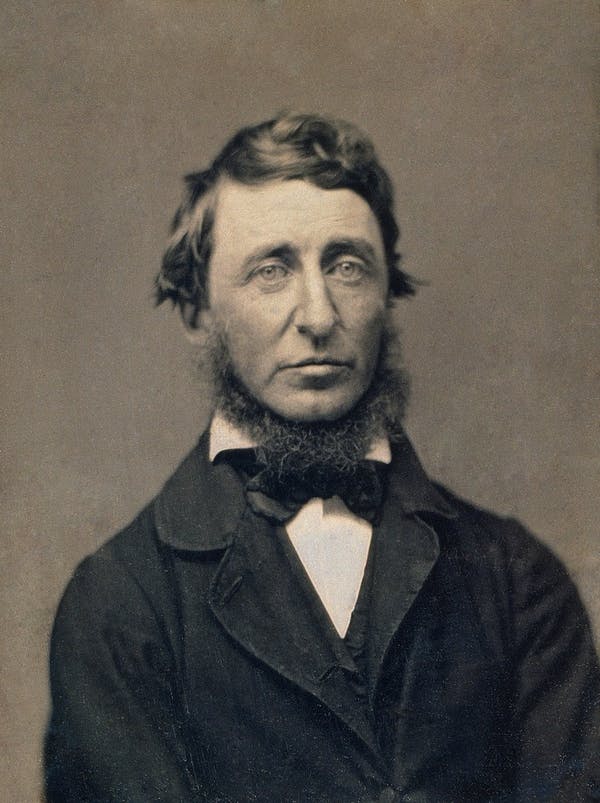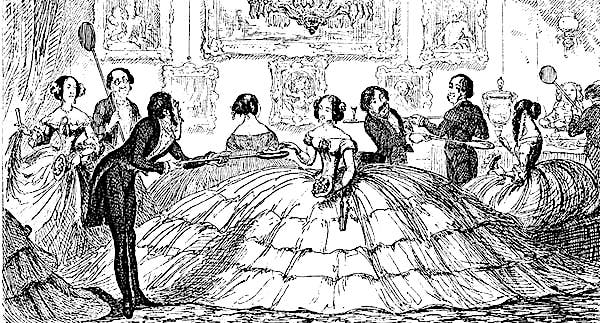Seeking to bend the coronavirus curve, governors and mayors have told millions of Americans to stay home. If you’re pondering what to read, it’s easy to find lists featuring books about disease outbreaks, solitude and living a simpler life. But it’s much harder to find a book that combines these themes.
As the author of three books about essayist, poet and philosopher Henry David Thoreau, I highly recommend “Walden,” Thoreau’s 1854 account of his time living “alone” in the woods outside Concord, Massachusetts. I qualify “alone” because Thoreau had more company at Walden than in town, and hoed a bean field daily as social theater in full view of passersby on the road.
Published in over 1,000 editions and translated into scores of languages, “Walden” is the scriptural fountainhead of the modern environmental movement, a philosophical treatise on self-reliance and a salient volume of the American literary canon. In his introduction to the Princeton edition, John Updike claims that Thoreau’s masterpiece “contributed most to America’s present sense of itself” during the cultural renaissance of the mid-19th century, yet “risks being as revered and unread as the Bible.”
Another reason to read or reread “Walden” during trying times is that it gushes with sorely needed optimism and is laced with wit. And Thoreau befriends you by writing in the first person.
Reality lies within us

Henry David Thoreau, 1856. National Portrait Gallery/Wikipedia
As governments mandate social distancing to protect public health, many readers may be coming to grips with solitude. Thoreau devotes a chapter to it, extolling the virtue of getting to know yourself really well.
“Why should I feel lonely?” he asks, “is not our planet in the Milky Way?” Elsewhere he clarifies the difference between what we need and what we think we need, writing, “My greatest skill has been to want but little.”
“Walden” doesn’t have to be read straight through like a novel. For readers who have previously given up on it, I suggest rebooting in the middle with “The Ponds,” which opens thus: “Sometimes, having had a surfeit of human society and gossip, and worn out all my village friends, I rambled still farther westward than I habitually dwell…” Thoreau then retreats away from the mindless distractions of community life toward an immersion into Nature, with water at its spiritual center.
Next, flip back to the earlier chapter “Where I Lived and What I Lived For.” Here Thoreau invites readers on a downward journey, from the fleeting shallows of their social lives to the solid depths of their individual lives:
“Let us settle ourselves, and work and wedge our feet downward through the mud and slush of opinion, and prejudice, and tradition, and delusion, and appearance, that alluvion which covers the globe, through Paris and London, through New York and Boston and Concord, through Church and State, through poetry and philosophy and religion, till we come to a hard bottom and rocks in place, which we can call reality…”
Our brains build that reality – yours, mine, everyone’s – by integrating external sensory signals with internal memories. Thoreau’s point – which is supported by 21st-century cognitive and neuroscience research – is that the real you precedes the social you. Your world is built from the inside of your skull outward, not vice versa.
The elusive simple life
Thoreau’s retreat to Walden Pond is often mistaken for a hermit’s flight deep into the woods. Actually, Thoreau put some distance between himself and his home and village so that he could understand himself and society better. When not in town, he swapped human companionship for the “beneficent society” of Nature for long enough to make “the fancied advantages of human neighborhood insignificant.”
Today mandatory social distancing is wrecking the global economy, based on traditional metrics like gross domestic product and stock prices. Viewed through “Walden,” this wreckage may look like a long-overdue correction for an unsustainable system.
Thoreau feared that the economy he saw was headed in the wrong direction. His opening chapter, “Economy,” is an extended rant against what he viewed as a capitalistic, urbanizing, consumption-driven, fashion-conscious 19th-century New England.
Of his neighbors, Thoreau wrote, “By a seeming fate, commonly called necessity, they are employed, as it says in an old book” – meaning the Christian Bible – “laying up treasures which moth and rust will corrupt and thieves break through and steal. It is a fool’s life, as they will find when they get to the end of it, if not before.”
In contrast, his recipe for a good economy is one of “Walden”‘s most famous quotes: “Simplicity, simplicity, simplicity! I say, let your affairs be as two or three, and not a hundred or a thousand.”

Thoreau’s family operated a flourishing pencil manufacturing business in the 1840s./University of Florida
Thoreau’s family operated a flourishing pencil manufacturing business in the 1840s. University of Florida, CC BY
That was easier said than done, even for Thoreau. When he conceived “Walden,” he was an unemployed, landless idealist. By the time it was published, he lived in a big house that was heated with Appalachian coal, earning income by manufacturing pulverized graphiteand surveying for land developers.
Since then, the world’s population has more than quintupled and developed nations have built a global economy approaching US$100 trillion per year. Human impacts on the planet have become so powerful that scientists have coined the term Anthropocene to describe our current epoch.
Finding perspective in solitude
Some Americans have tried at least halfheartedly to follow “Walden”’s idealistic advice by living deliberately, being more self-reliant and shrinking their planetary footprints. Personally, although I’ve downsized my house, walk to work, fly only for funerals and cook virtually every meal from scratch, in my heart I know I’ve also contributed to the world’s swelling population, burn fracked natural gas and am hopelessly embedded in a consumer economy.
Nevertheless, after several weeks of social distancing, I’m rediscovering the value of two of Thoreau’s key points: Solitude is helping me recalibrate what matters most, and the current economic slowdown offers short-term gains and a long-term message for the planet.
These benefits don’t compensate for the incalculable personal losses and grief that COVID-19 is inflicting worldwide. But they are consolation prizes until things stabilize in the new normal. On my daily solitary walk in the woods, I am mindful of Thoreau’s words: “Next to us is not the workman whom we have hired, with whom we love so well to talk, but the workman whose work we are.
By Robert M. Thorson, Professor of Geology, University of Connecticut, a midwestern NATIVE who morphed into a western GEOLOGIST who morphed into a New England PROFESSOR, who was asked to become the HEAD of the Department of Geosciences at the University of Connecticut. He has authored 7 books, nearly 500 essays and opinions, and dozens of technical articles. He walks to work through the woods, around a pond, across a stream, and on top of a stone wall.
Used by permission in partnership with The Conversation.
_________________________________________________________________________________________________________
The fashionable history of social distancing
As the world grapples with the coronavirus outbreak, “social distancing” has become a buzzword of these strange times.
Instead of stockpiling food or rushing to the hospital, authorities are saying social distancing – deliberately increasing the physical space between people – is the best way ordinary people can help “flatten the curve” and stem the spread of the virus.
Fashion might not be the first thing that comes to mind when we think of isolation strategies. But as a historian who writes about the political and cultural meanings of clothing, I know that fashion can play an important role in the project of social distancing, whether the space created helps solve a health crisis or keep away pesky suitors.
Clothing has long served as a useful way to mitigate close contact and unnecessary exposure. In this current crisis, face masks have become a fashion accessory that signals, “stay away.”
Fashion also proved to be handy during past epidemics such as the bubonic plague, when doctors wore pointed, bird-like masksas a way to keep their distance from sick patients. Some lepers were forced to wear a heart on their clothes and don bells or clappers to warn others of their presence.
However, more often than not, it doesn’t take a worldwide pandemic for people to want to keep others at arm’s length.
In the past, maintaining distance – especially between genders, classes and races – was an important aspect of social gatherings and public life. Social distancing didn’t have anything to do with isolation or health; it was about etiquette and class. And fashion was the perfect tool.
Take the Victorian-era “crinoline.” This large, voluminous skirt, which became fashionable in the mid-19th century, was used to create a barrier between the genders in social settings.
While the origins of this trend can be traced to the 15th-century Spanish court, these voluminous skirts became a marker of class in the 18th century. Only those privileged enough to avoid household chores could wear them; you needed a house with enough space to be able to comfortably move from room to room, along with a servant to help you put it on. The bigger your skirt, the higher your status.

A satirical comic pokes fun at the ballooning crinolines of the mid-19th century./ Wikimedia Commons
In the 1850s and 1860s, more middle-class women started wearing the crinoline as caged hoop skirts started being mass-produced. Soon, “Crinolinemania” swept the fashion world.
Despite critiques by dress reformers who saw it as another tool to oppress women’s mobility and freedom, the large hoop skirt was a sophisticated way of maintaining women’s social safety. The crinoline mandated that a potential suitor – or, worse yet, a stranger – would keep a safe distance from a woman’s body and cleavage.
Although these skirts probably inadvertently helped mitigate the dangers of the era’s smallpox and cholera outbreaks, crinolines could be a health hazard: Many women burned to death after their skirts caught fire. By the 1870s, the crinoline gave way to the bustle, which only emphasized the fullness of the skirt on the posterior.
Women nonetheless continued to use fashion as a weapon against unwanted male attention. As skirts got narrower in the 1890s and early 1900s, large hats – and, more importantly, hat pins, which were sharp metal needles used to fasten the hats – offered women the protection from harassers that crinolines once gave.
As for keeping healthy, germ theory and a better understanding of hygiene led to the popularization of face masks – very similar to the ones we use today – during the Spanish flu. And while the need for women to keep their distance from pesky suitors remained, hats were used more to keep masks intact than to push strangers away.
Today, it isn’t clear whether the coronavirus will lead to new styles and accessories. Perhaps we’ll see the rise of novel forms of protective outerwear, like the “wearable shield” that one Chinese company developed.
But for now, it seems most likely that we’ll all just continue wearing pajamas.
By Einav Rabinovitch-Fox, Visiting Assistant Professor, Case Western Reserve University, a historian of modern U.S. history with special emphasis on women’s and gender history. Her research examines the broad intersections between gender, politics, modernity, and culture, with an emphasis on fashion.
Used by permission in partnership with The Conversation.






Be the first to comment on "Coronavirus culture: ‘Walden’ and fashion"